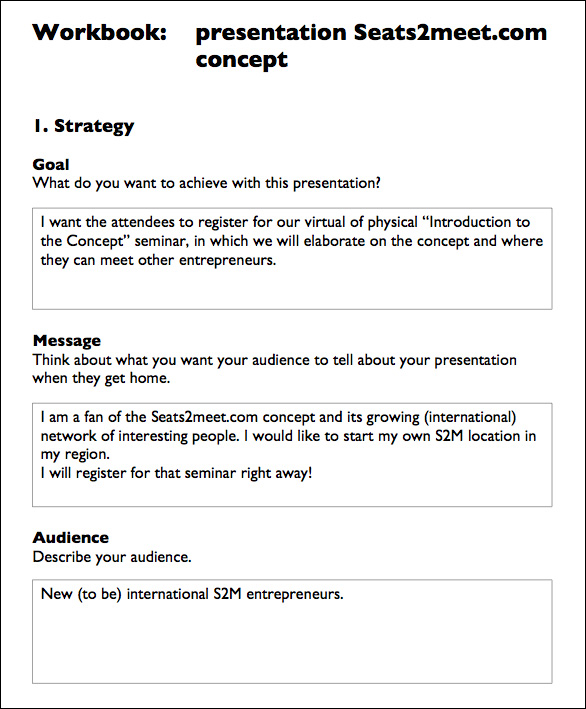The very first step is defining the strategy of your presentation. It consists of three parts:
- Goal
- Message
- Audience
Take a piece of paper with the number one on it. Draw three boxes on it and write GOAL, MESSAGE, and AUDIENCE above the three boxes.
This step is the most important step of the whole method. Define it well and look regularly back at it.
Define your goal in one sentence. Think of what you want to achieve with the presentation and write it down. What do you want the audience to do after your presentation? Should they call you? Should they send you an e-mail? Should they immediately buy your new product? Do you want them to ask for more information? Think of one (yes one) specific goal and write it down in one sentence in the GOAL box.
Be as specific as possible and avoid vague language. Don't write down the mission statement or vision of your company, because that's not what you want to reach with your presentation. Most of the time, you want to sell something. A business presentation is mostly about sales.
By defining one goal, you are not only focused, it's also easier to measure the success of your presentation. It's better to go for one small goal then try to reach for the impossible.
While defining the message, you should think about what you want your audience to remember after your presentation. A good practice is to think about what you want your audience to say about your presentation when they get home.
What I mean is, after someone attended your presentation, what do they say at home about your presentation? What do you want them to say at home? Write that sentence in the MESSAGE box.
Describe who your audience is. Think of gender, age, education, number of people, language, and nationality. What do they already know about your company, about you, about your products, and services? Try to describe as much as possible and write it down in the AUDIENCE box.
If you'll use the presentation not in front of a live audience, but on a website or for an exhibition for instance, you should write that down as well. Standalone prezis (that's how we call them) might need more text or a voice-over, since there's no presenter to tell the story. Our finished strategy now looks like the following screenshot:

